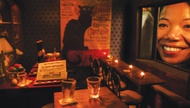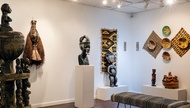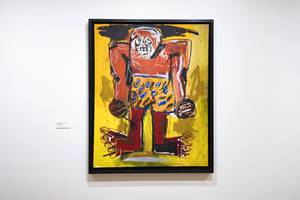
Desert Oasis Through February 23; Monday-Thursday, 10 a.m.- 8 p.m.; Friday-Sunday, 10 a.m.-6 p.m. Sahara West Library, 9600 W. Sahara Ave., 702-507-3630.
Is that painting by Joe Xu—the barefoot girl-child in a shiny teal dress—influenced more by Rembrandt or Vermeer? Aren’t those spiraling lemon peels in Lucy Zhu and Qiang Tong’s still lifes lifted from Flemish Old Masters? And don’t those lush wetland landscapes by Zheng Zhan resemble Gustave Courbet?
Knowledge of European art history and expert painting ability are the strong suits in the Desert Oasis group exhibition at Sahara West Library. The offspring of the American Chinese Culture and Art Association of Nevada, Oasis features 18 Chinese and Chinese-American artists, and one non-Asian-American, Robert Beckmann. Almost uniformly, the artists shun Asian art traditions and draw upon the Western canon.
Among the 28 oil paintings in the Oasis show, academic genres hold sway. Some landscapes are painted en plein air, the artists setting up easels outdoors in Southern Nevada and working from nature. Others paint in the studio, either still lifes or portraits. Tweaking institutionalized art categories and traditions is not the overarching goal. Nor is there a desire to use historical techniques to critique culture and society. Hallmarks of recent art history—irony, say, or political messaging—are mostly banished. No self-conscious appropriation of famous motifs here. The Oasis objective is direct, sincere mastery of Western historical idioms and techniques, often in an idealized realist style.
Song Ting’s mesmerizing “Bronze Ware,” with its incandescent bronze goblet and scattered purple mangosteens, seems right out of 17th-century Holland. With muted palette and oblique lighting, along with painstaking attention to texture and shine, Ting convincingly produces a painting that seems, at first glance, 300-plus years old. Zhu Mei’s “Life,” an interesting close-up of a waning sunflower, and Heyong Wang’s “Love Hometown” with its curious phallic sheaf of corn, slightly modernize techniques by scaling up subject matter. Other works recall classic 19th-century American artists—Beckmann’s contemplative “The Wash (Lovers)” intimates the grandeur of an Albert Bierstadt, while Huai Tang’s festive “Go to the Rodeo” brings to mind Charles Marion Russell.
The only painting visibly drawing upon the Asian canon is Lily Li’s “Hundred Birds.” A whopping 48 by 192 inches, it depicts a vibrant flock of parrots in a tropical forest. By placing 19 birds in the extreme foreground and reducing depth of field, Li flattens perspective and turns up the color on her feathers, the glowing light in the sky seemingly sanctioning the parrots’ symbolic association with good news.
Although Oasis is an uneven show, the painting know-how is to be greatly admired. Viewers put off by contemporary art’s mandate to break new ground befitting our chaotic age won’t have to stretch themselves and can bask in recognizable, historical styles. That said, there’s a feeling of missed opportunity in the show. The evident talent on display could be used to amaze rather than please.






